
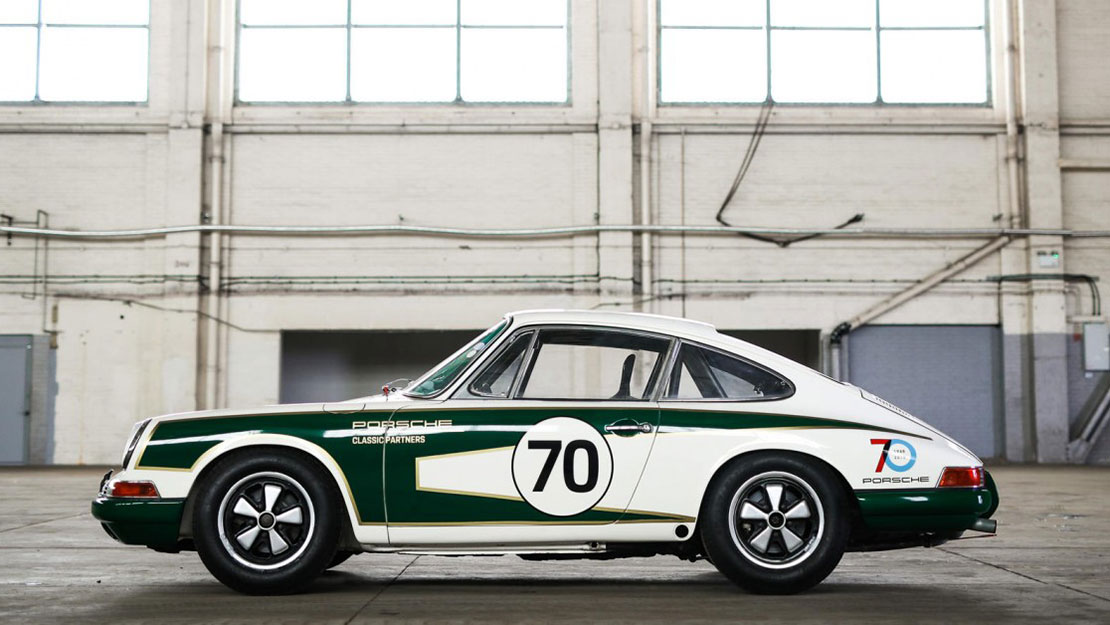
Porsche 911 - The Evolution Of A Legend
Nov 22, 2023 |
In the realm of high-performance sports cars, few names evoke as much reverence and admiration as the Porsche 911. For over six decades, this iconic German automobile has reigned supreme, captivating enthusiasts worldwide with its timeless design, exhilarating performance, and unwavering dedication to engineering excellence.
Born in 1963 as the successor to the Porsche 356, the 911 initially faced scepticism due to its radical rear-engine configuration. However, this unique layout proved to be a stroke of genius, endowing the 911 with exceptional handling and balance that defied expectations.
Over the years, the 911 has undergone continuous evolution, embracing technological advancements while staying true to its core identity. Its air-cooled, flat-six engine, nestled behind the rear axle, has become synonymous with the brand, delivering a symphony of power and refinement.
The 911's legacy extends beyond mere performance figures; it has become a cultural icon, a symbol of sophistication and automotive prowess. From Hollywood films to racing circuits, the 911 has been an integral part of automotive history, shaping the perception of sports cars and inspiring generations of designers and engineers.
As we delve into the evolution and reputation of the Porsche 911, we'll explore the factors that cemented its position as one of the most influential and celebrated automobiles of all time.
A Glimpse Into History - The Birth Of An Icon

In the heart of Stuttgart, Germany, in the early 1960s, a revolutionary idea took shape in Porsche AG's halls. Ferdinand Alexander "Butzi" Porsche, the son of the company's founder, was determined to create a successor to the Porsche 356, the company's first sports car.
The automotive landscape at the time was dominated by front-engine, rear-wheel-drive designs, a layout that had been the norm for decades. However, Butzi Porsche had a different vision. He believed a rear-engine configuration could offer superior handling and balance, allowing for a more agile and responsive driving experience.
The initial design of the 911, codenamed 901, reflected this innovative approach. The car featured a sleek, sloping roofline, a short wheelbase, and a rear-mounted flat-six engine. This layout shifted the weight distribution towards the rear, improving traction and cornering abilities.
Despite some scepticism, Butzi Porsche's vision proved to be a masterstroke. The 911, introduced in 1963 at the Frankfurt International Motor Show, quickly gained a reputation for its exceptional handling and performance. It was a car that could keep up with the fastest machines of the day and deliver a level of agility and responsiveness that other sports cars could only dream of.
The 911's impact on the automotive industry was immediate and profound. It challenged conventional thinking, redefined the boundaries of sports car design, and set a new standard for performance and handling. The car's enduring legacy is a testament to its groundbreaking design and the visionary genius of Ferdinand Alexander Porsche.
Generational Evolution - A Legacy Of Continuous Improvement
Over the past six decades, the Porsche 911 has continuously evolved, adapting to changing technologies and performance demands while retaining its core identity. Each generation has introduced significant design changes, technological advancements, and performance improvements, cementing the 911's position as a benchmark for high-performance sports cars.
Early Years (1963-1973): The Foundation Of A Legend
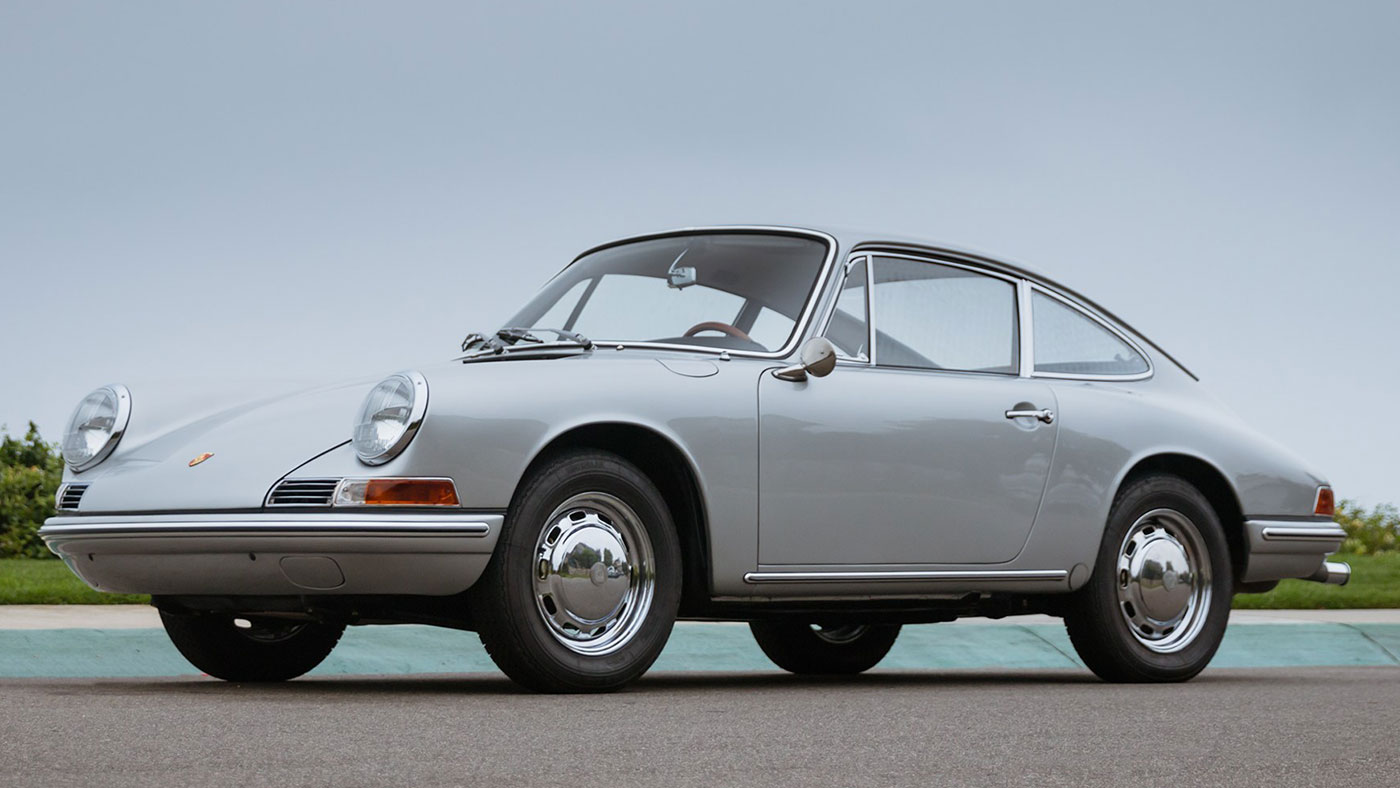
The early years of the Porsche 911 laid the foundation for what would become an automotive legend. The 911's first generation introduced a design that has since become synonymous with the model's identity. The iconic aesthetic, characterized by a sleek and minimalist design language, has left an indelible mark on automotive history.
At the heart of the early 911 models were air-cooled flat-six engines, a distinctive feature that would remain a hallmark of the 911 for decades. The engine displacements ranged from 2.0 to 2.4 litres, and these air-cooled power plants were celebrated for their smooth power delivery. The most powerful version of the early 911, the 2.4L Carrera RS, produced 210 horsepower and could reach a top speed of over 150 mph.
The decision to place the engine in the rear, a design choice inspired by the Porsche 356 that preceded it, contributed to the 911's unique driving dynamics.
The short wheelbase and sloping roofline of the early 911 further accentuated its sporty and dynamic profile. This design contributed to the car's aesthetic appeal and was crucial in handling characteristics. The rear-engine configuration and a well-tuned suspension provided a balanced and responsive driving experience.
Throughout this period, the 911 demonstrated its prowess on the road and the track, earning a reputation for performance and agility. The racing success of the 911, particularly in events like the Monte Carlo Rally and the Targa Florio, solidified its status as a high-performance sports car.
As the first decade of the 911's production unfolded, it became clear that Porsche had created something enduring and iconic. The early models established a legacy that would evolve and endure in the years to come, shaping the identity of the Porsche 911 and influencing the design of sports cars across generations.
G-Series (1973-1989): Refining The Icon
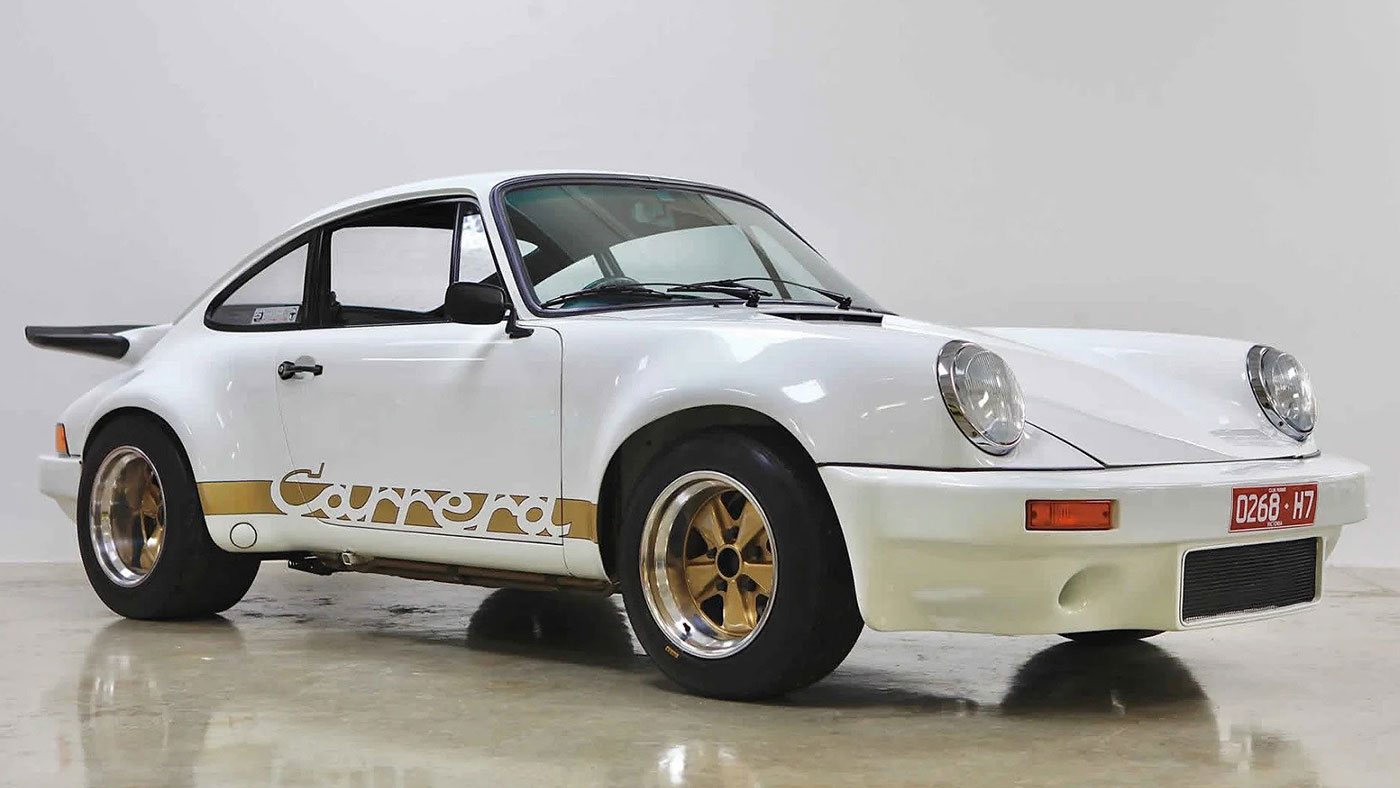
The G-Series era was a crucial phase in the evolution of the Porsche 911. Changes and refinements during this period contributed to the iconic status of the 911.
Aerodynamic improvements enhanced stability and handling, particularly at higher speeds. Larger bumpers and a rear spoiler not only influenced the car's aesthetic appeal but also significantly impacted its performance characteristics.
The G-Series introduced the turbocharged variant known as the 930 Turbo, a true performance powerhouse that pushed the boundaries of what was expected from a sports car. Its 3.0-liter turbocharged flat-six engine delivered raw power and exhilarating acceleration, setting a new standard for high-performance vehicles.
Evolving safety and regulatory standards were addressed in the G-Series, helping the 911 maintain its relevance in a changing automotive landscape while staying true to its performance and distinctive design heritage.
The Porsche 911 continued to assert its dominance on both road and track throughout the G-Series production years. The model's racing success further solidified its reputation as a high-performance sports car. Various iterations, including the iconic Carrera RS, left an indelible mark in automotive history.
964 (1989-1994): Embracing Modernity
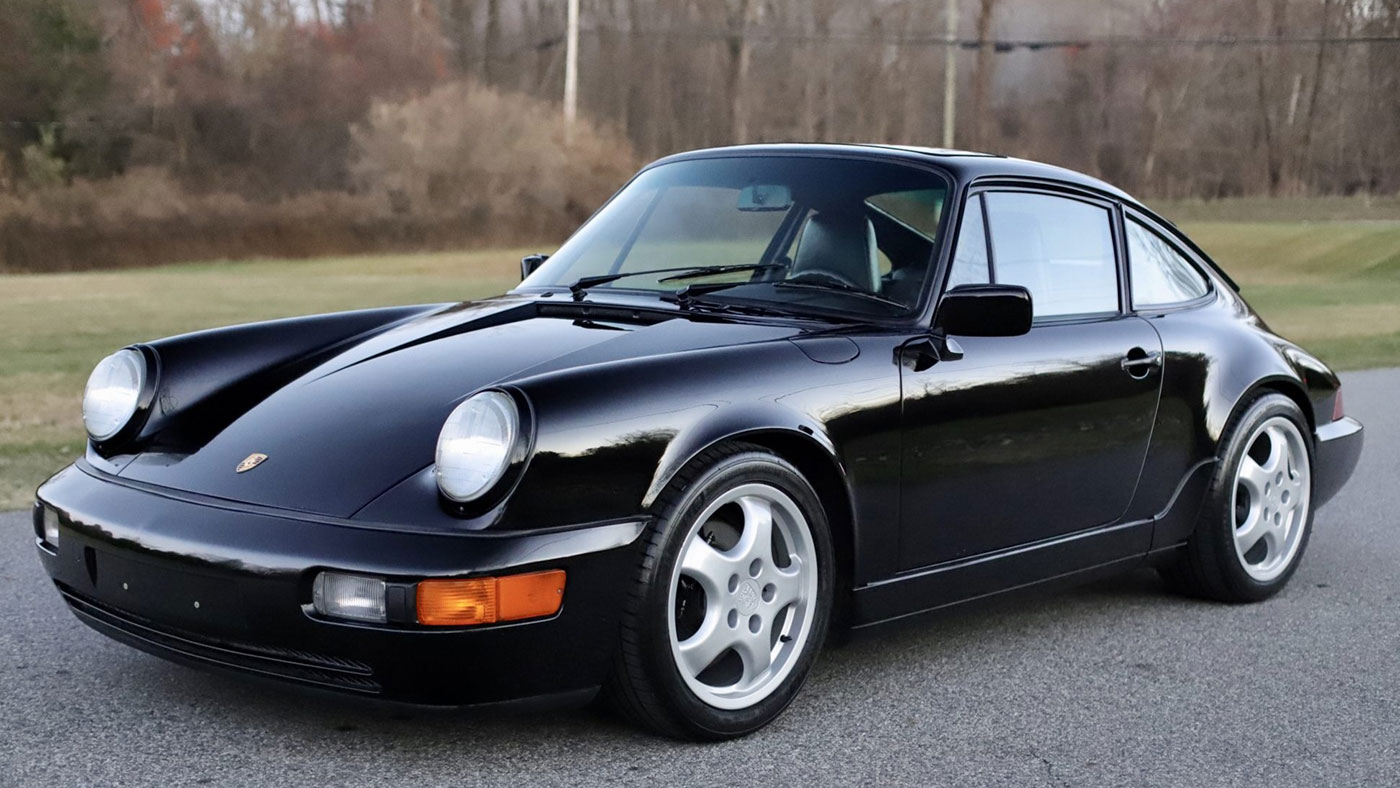
The 964 generation, spanning from 1989 to 1994, not only revamped the exterior design of the Porsche 911 but also ushered in a technological renaissance, notably with the introduction of a sophisticated all-wheel-drive system.
The innovative all-wheel-drive system in the 964 was a game-changer, setting the stage for the evolution of high-performance Porsches. This system, known as the Porsche AWD or "Porsche-Allrad," seamlessly distributed power between the front and rear wheels, enhancing the 911's traction, handling, and stability. In challenging driving conditions, whether navigating tight corners or adverse weather, the all-wheel-drive prowess of the 964 became a defining feature, elevating the driving experience to new heights.
This technical marvel showcased Porsche's commitment to pushing boundaries and established a precedent for subsequent generations. The 964 generation wasn't just about a sleek exterior redesign; it was a testament to Porsche's dedication to advancing automotive technology and ensuring its continued reign as an iconic sports car.
993 (1994-1998): The End Of An Era

As the 20th century drew to a close, the Porsche 993 generation marked not just the end of an era but also the crowning achievement of air-cooled brilliance for the iconic 911. This chapter in Porsche's history was not merely a farewell to the air-cooled era but a crescendo of technical refinement and performance innovation that elevated the 911 to new heights.
The 993 generation introduced a suite of technical advancements that showcased Porsche's unwavering commitment to engineering excellence. A new suspension system revolutionized the 911's handling, striking a harmonious balance between agility and comfort. This refined suspension and the inherent balance of the 911's rear-engine layout transformed the car into a true driver's delight, offering an exhilarating and rewarding driving experience.
Parallel to these suspension enhancements, the 993 generation witnessed significant improvements in engine performance. The naturally aspirated engines across the 911 range received power boosts, delivering a more potent and responsive driving experience.
The 993 Turbo, in particular, stood out as a true pinnacle of power and performance. Its twin-turbocharged 3.6-litre flat-six engine unleashed a power surge, propelling the 993 Turbo to new performance heights and solidifying its position as a true high-performance sports car.
With its exhilarating acceleration, precise handling, and refined driving dynamics, the 993 Turbo epitomized the pinnacle of Porsche's engineering expertise and the culmination of air-cooled performance.
996 (1998-2005): Embracing Water Cooling

The 996 generation, produced from 1998 to 2005, represented a pivotal shift in the Porsche 911's legacy, marking a bold departure from tradition by introducing a water-cooled flat-six engine. Initially met with scepticism, this groundbreaking decision proved to be a game-changer, unlocking new realms of performance and efficiency.
At the heart of the 996's transformation was the water-cooled 3.4-litre flat-six engine, a marvel of engineering that delivered exceptional power and responsiveness. This innovative power plant propelled the 996 to new heights of performance, setting a new benchmark for the iconic sports car.
Complementing the engine's prowess was a significant exterior redesign that embraced a more rounded and modern aesthetic, reflecting the changing design sensibilities of the late 1990s and early 2000s. This stylistic evolution departed from the 911's traditional look, paving the way for a new era while retaining the car's core identity.
Further solidifying the 996's technological advancements was the introduction of the Carrera 4S, an all-wheel-drive variant that seamlessly blended exceptional handling with blistering performance. This innovative addition demonstrated Porsche's commitment to expanding the 911's capabilities, proving that innovation extended beyond the engine compartment to encompass the very essence of the driving experience.
997 (2004-2012): Refining the Formula
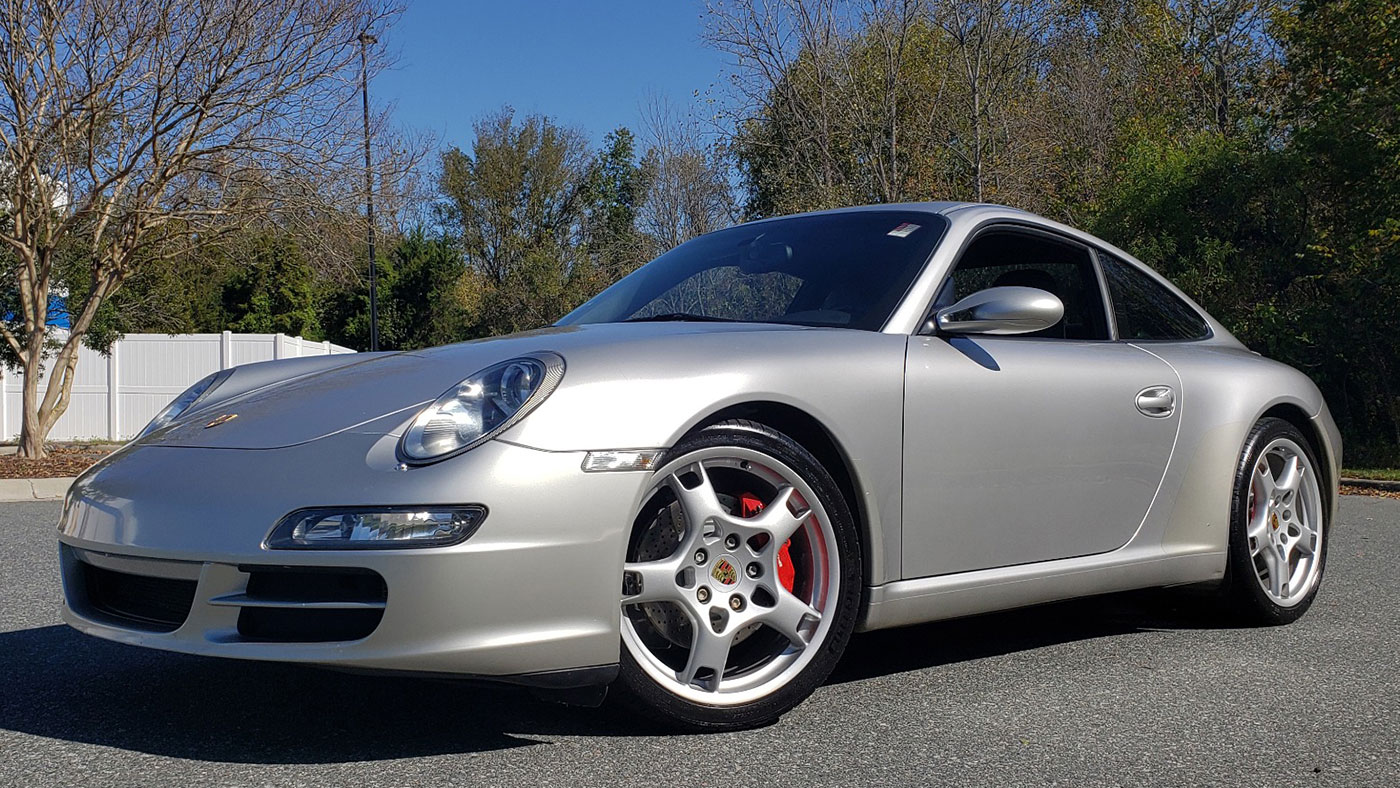
The 997 generation of the Porsche 911, spanning from 2004 to 2012, marked a seamless continuation of the iconic sports car's legacy. Building upon the advancements established by its predecessor, the 996 and the 997 elevated the 911 to new heights of performance, refinement, and technological prowess. The 2006 Porsche 911 Carrera S embodied this evolution, a testament to the 997's ability to refine the formula while maintaining the core Porsche DNA.
Externally, the 997 embraced a refined aesthetic, featuring sharper lines, a wider stance, and an assertive front end. This subtle yet impactful redesign conveyed a sense of precision and balance, retaining the timeless elegance of the 911 while establishing its own distinct identity in the automotive landscape.
The 997 era witnessed a surge of technological advancements that redefined the 911's performance and driving dynamics. Introducing a direct-injection engine system optimized fuel delivery, leading to improved fuel efficiency and enhanced power output. This innovative system, coupled with the availability of a dual-clutch transmission known as Porsche Doppelkupplungsgetriebe (PDK), resulted in smoother and faster gear changes, further elevating the driving experience.
The 997 generation stood as a testament to Porsche's unwavering commitment to continuous improvement and innovation. Its refined exterior design, advanced powertrains, and chassis enhancements delivered exceptional performance without compromising comfort or driving pleasure. The 997 left an indelible mark on the automotive landscape, solidifying its legacy as a benchmark for high-performance sports cars.
991 (2011-2019): A Technological Leap
The 991 generation of the Porsche 911, spanning from 2011 to 2019, represented a groundbreaking juncture in the car's evolutionary path. This era showcased a substantial technological leap forward and firmly established the 911 as the epitome of high-performance sports cars.
At the core of the 991's metamorphosis was a meticulously redesigned chassis and body, finely tuned to deliver unparalleled handling, agility, and overall performance. The reduction in weight and the heightened rigidity of this new construction marked a pivotal shift in the engineering paradigm of the 911, unlocking sharper manoeuvres, more responsive handling, and an overall enriched driving experience.
The 991 era heralded the widespread adoption of turbocharged engines across all models, ushering in a new generation of power and efficiency. Fueled by a 3.0-litre twin-turbocharged flat-six engine, the 991 boasted an impressive power range from 370 hp (276 kW) to an astonishing 700 hp (515 kW), with torque spanning from 332 lb-ft (450 N·m) to 553 lb-ft (750 N·m).
Transmission options included a 7-speed manual or a 7-speed dual-clutch transmission. Acceleration from 0 to 60 mph ranged from 3.3 seconds to 3.9 seconds, while top speeds spanned from 190 mph (306 km/h) to 211 mph (340 km/h).
In tandem with these significant advancements, the 991 introduced a seven-speed manual transmission for a more precise and engaging gear-shifting experience. Furthermore, a suite of integrated driver-assistance systems was introduced, enhancing safety and convenience and further refining the 911's performance, making it appealing to an even wider audience of drivers.
992 (2019-Present): A Modern Masterpiece
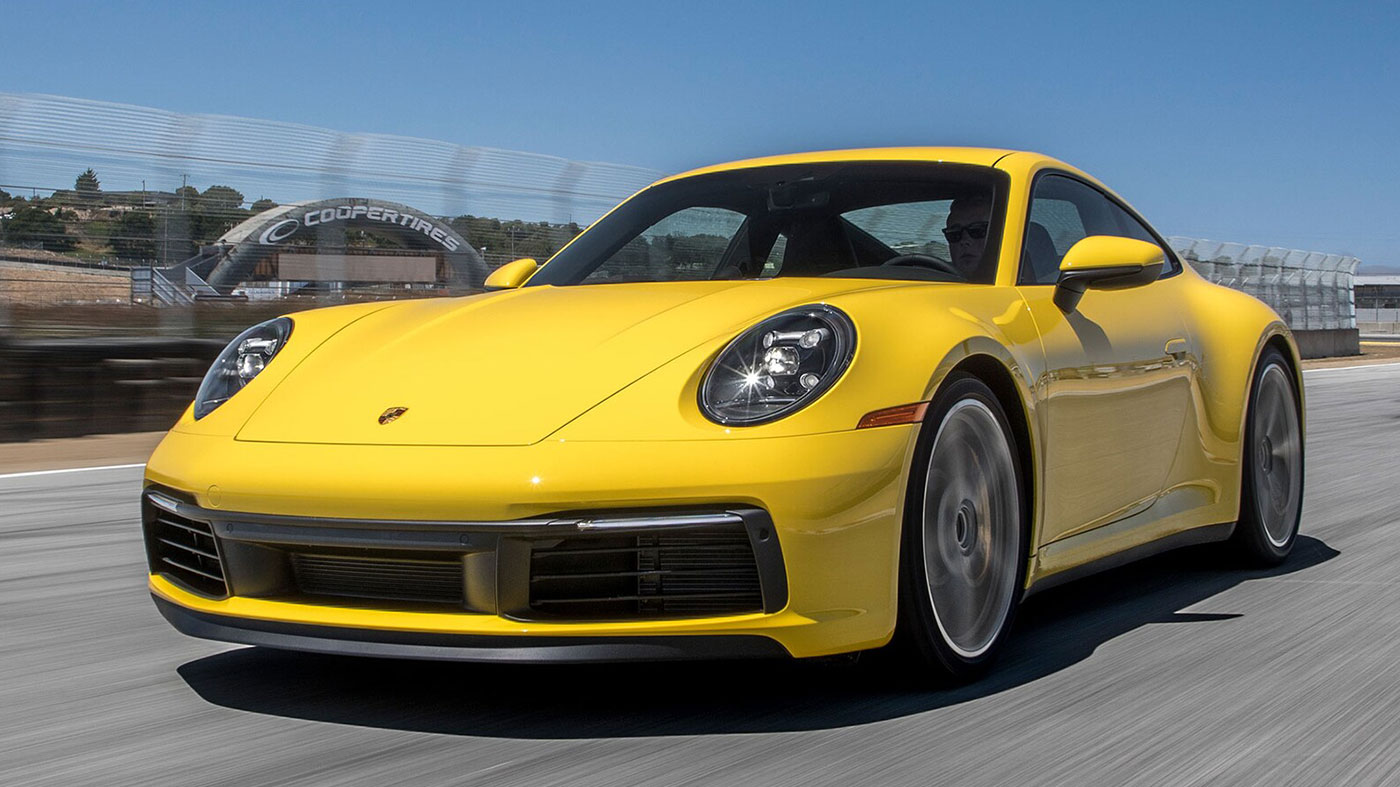
The 992 generation of the Porsche 911, introduced in 2019, marks a significant milestone in the car's enduring legacy. Building upon the success of its predecessors, the 992 seamlessly blends cutting-edge technology, enhanced performance, and refined design, solidifying its position as a benchmark for high-performance automobiles.
The 992's meticulously crafted design prioritizes both performance and visual appeal. Depending on the variant, its wider track, ranging from 62.0 inches to 63.8 inches, and its revised suspension system contribute to exceptional handling, agility, and stability.
Enhanced by its more powerful and efficient engine lineup, including a 3.0-litre twin-turbocharged flat-six engine producing up to 640 horsepower, the 992 delivers an exhilarating driving experience. The refined exterior design, characterized by sharper lines and a more assertive stance, exudes a timeless elegance that has become synonymous with the 911 nameplate.
The 992 era has witnessed a surge of technological advancements that further enhance the 911's capabilities and appeal to a broader range of drivers. Integrating advanced driver-assistance systems, such as adaptive cruise control and lane departure warning, elevates safety and provides a more relaxed and comfortable driving experience.
Additionally, incorporating state-of-the-art connectivity features, including a high-resolution touchscreen infotainment system and smartphone integration, ensures that the 992 remains at the forefront of automotive technology.
With acceleration from 0 to 60 mph ranging from 2.8 seconds to 3.7 seconds, depending on the variant, and top speeds reaching up to 205 mph, the 992 not only elevates the driving experience to new heights but also solidifies the 911's legacy as an icon of automotive design and engineering.
Iconic Models
Throughout its history, the Porsche 911 has produced several iconic models that have become legends in their own right. These models include:
- 911 Carrera RS (1970): A lightweight, high-performance model designed for racing.
- 911 Turbo (1975): The first production car to feature a turbocharged engine, the 911 Turbo was a groundbreaking performance machine.
- 911 Carrera 2 (1984): The first 911 to feature a rear spoiler as standard equipment, the Carrera 2 was a popular choice for enthusiasts and collectors.
- 911 GT2 (1995): A street-legal racing car, the GT2 was one of the most powerful and fastest 911s ever produced.
- 911 Carrera S (2012): The first 911 to feature a turbocharged flat-six engine, the Carrera S set a new standard for performance and efficiency.

JOINING OUR MAILING LIST
+971 56 682 2025

